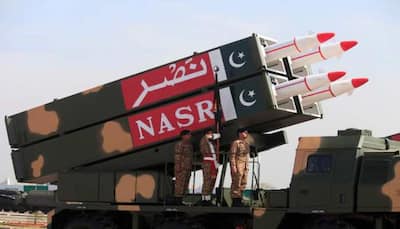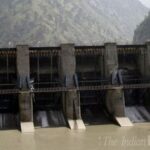New Delhi: With China being reportedly behind it, Pakistan is quietly but aggressively boosting its nuclear arsenal. The revelation has been made by a new World Threat Assessment by U.S. Defence Intelligence Agency. Pakistan continues to see India, as per the report, not as a rival but as an existential threat.
Released on May 25, the pulls no punches. It says that that the Pakistan’s military is not only revamping its nuclear stockpile but also acquiring materials and technology required for weapons of mass destruction (WMD) from foreign suppliers – especially from China. These transfers – the report suggests – are routed through the UAE, Turkey, Singapore and Hong Kong to make them harder to trace.
It is not only nukes, Pakistan’s military focus is also on cross-border skirmishes with neighbours, upgrading its nuclear command and control and acquiring advanced tech to support WMD capabilities.
And India? Pakistan – the report makes it crystal clear – continues to see India as a fundamental threat to its existence. With an aim to counter-balance India’s superior conventional forces, Islamabad is pursuing development of battlefield nuclear weapons.
Despite being Pakistan’s largest military supplier, the report highlights, the relation between Beijing and Islamabad is far from smooth. Why? An increasing number of attacks on Chinese nationals working in Pakistan has soured relations between the two nations.
Although China is investing in Pakistan, yet it is also losing patience with the Islamabad’s inability to protect Beijing’s nationals’ lives on its soil.
India is not seemingly sitting quietly. The U.S. highlights New Delhi’s swift response to late April Pahalgam terror attack. Indian armed forces launched a precision strike on terror-linked infrastructures inside Pakistan and that escalated fast. From May 7 to 10, militaries from both sides exchanged missiles, drones, loitering munitions and heavy artillery fire. Though the exchange was intense, yet, by May 10, the two sides agreed to a ceasefire.
India also seems to work smarter. The report notes New Delhi’s rising push to enter into defence partnerships across the Indian Ocean region. It is a strategy to contain China’s increasing influence.
There is a progress even on China’s front. New Delhi and Beijing both have agreed to disengage troops from two contentious points along the eastern Ladakh border. But let us be clear: the underlying border dispute still remains unresolved.
India’s military upgradation is not only about border skirmishes, the report hails New Delhi’s push for self-reliance in defence production under the Made in India initiative. Take for instance, commissioning of a second nuclear-powered submarine, development of Agni-V with MIRVs (multiple independently targetable re-entry vehicles) and testing of Agni-I Prime (a medium-range ballistic missile).
In spite of reducing new arms purchases, India has not severed ties with Russia. The report says that New Delhi may maintain its strategic defence ties with Moscow through 2025 because of its ongoing dependence on Russian spare parts for existing platforms.
In nut shell, though Pakistan is arming itself up with the support of China, India is not only responding but also evolving. From indigenous defence development to strategic alliances and battlefield strikes, New Delhi is crafting a response – which is not only about today’s threats but also tomorrow’s dominance.
Stay informed on all the , real-time updates, and follow all the important headlines in and on Zee News.








